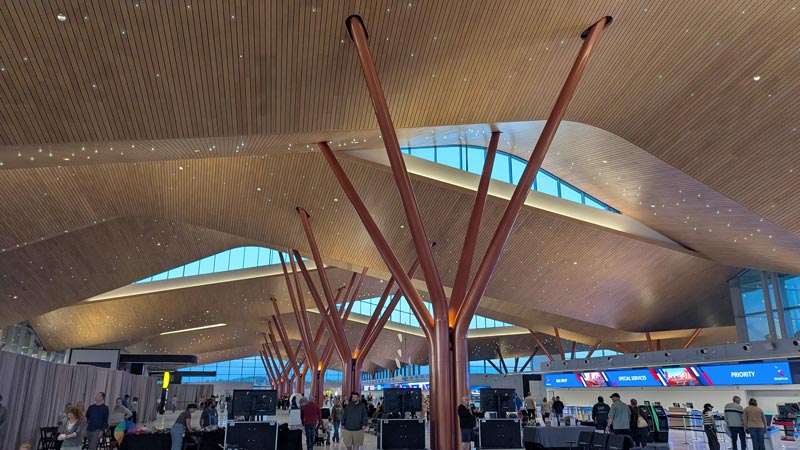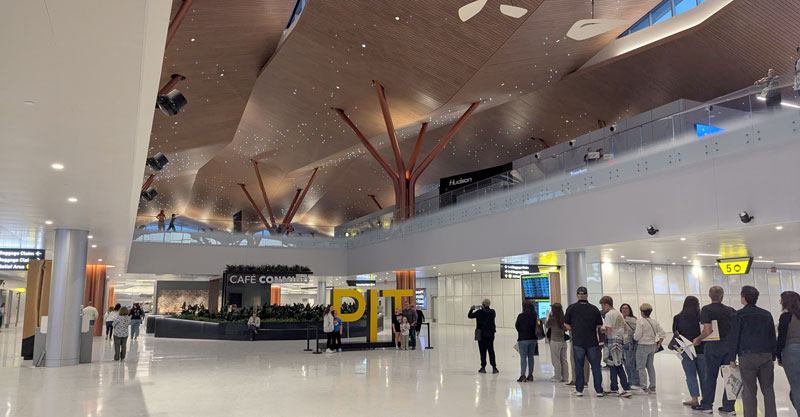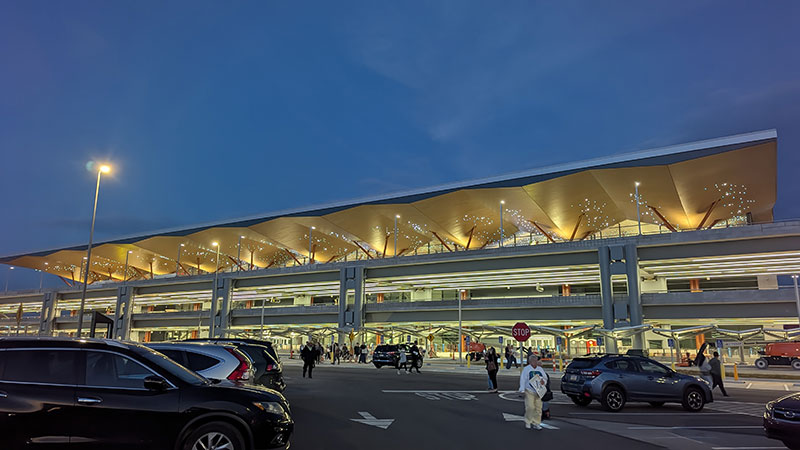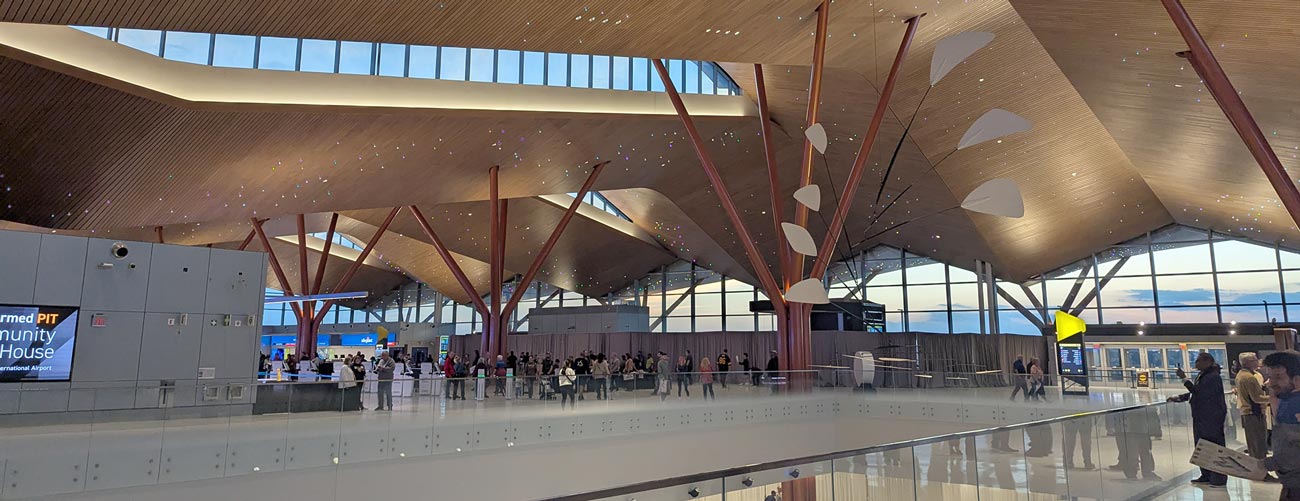PIT Takes Flight: Building a Sustainable Legacy at the New Pittsburgh International Airport Terminal

In an era of evolving infrastructure and climate challenges, the Terminal Modernization Program stands as proof that resilience and design excellence can travel hand in hand.
Pittsburgh International Airport’s new terminal opens this Fall—ushering in a new chapter in its history with a renewed focus on sustainability supported by evolveEA. Decades in the making, the $1.7 billion dollar Terminal Modernization Program (TMP) represents a new benchmark in modern American aviation infrastructure. The project is a powerful symbol of transformation for the city of Pittsburgh: once known for smoke and steel, now a world-class hub for high tech innovation and green building.
evolveEA Leads Sustainability Vision
PIT’s new facilities also redefine what sustainability means on the scale of an international airport. As sustainability certification manager for both LEED and Parksmart, evolveEA worked alongside the Allegheny County Airport Authority (ACAA), architecture firms Gensler + HDR in association with Luis Vidal + Architects; PJ Dick/Hunt, Michael Baker International, and dozens of design and construction professionals to integrate environmental goals into every phase — from planning and design through construction and certification deliverables.
The ACAA set forth a clear vision for Pittsburgh International in line with changing climate, energy, and aviation realities. The result is a new terminal that embodies efficiency, resiliency, and regional pride. Supporting this effort, Marc Mondor, AIA, LEED Fellow; Grace Cameron, LEED AP; and Ian Cook, AIA, LEED BD+C ND have led evolveEA’s team—advocating for sustainability considerations throughout the goal-setting, design, and construction process. From optimizing energy and water systems to selecting low-impact materials and enhancing indoor environmental quality, their leadership helped define a new model of airport design that balances operational performance with long-term environmental stewardship.
For evolveEA, the Terminal Modernization Program represents a defining opportunity to apply multidisciplinary expertise at a civic scale—aligning climate action, building performance, and community identity in one transformative project.
— Marc Mondor, AIA, LEED Fellow, Principal, evolveEA
Collaboration Across the Project Team
Building on a shared sustainability vision, evolveEA helped translate high-level goals into measurable performance targets using LEED and Parksmart as guiding frameworks for the terminal and multimodal complex. By connecting design intent with construction execution, the team ensured that strategies for energy and water efficiency, material health, and indoor environmental quality were consistently applied and documented from concept through completion. This integrated process turned collaboration into measurable performance—advancing a model of airport design that unites operational efficiency with long-term environmental stewardship.
Sustainability Features Spotlight:
-
Material Reuse and Construction Waste Reduction
Onsite recycling of multiple material streams, including crushing and reusing existing concrete and steel. The project has diverted nearly all demolition waste from landfill (~99%).
-
Material Health and Transparency
Verification of Low-Emitting Materials, Environmental Product Declarations (EPDs), Health Product Declarations (HPDs), and recycled content documentation ensures interior finishes meet third-party verified emissions and health standards.
-
Energy and Carbon Optimization
Use of efficient mechanical systems, daylighting, and high-performance building envelope strategies. The terminal is connected to PIT’s on-site microgrid (solar + natural gas generators) to boost resiliency and reduce dependence on external utilities.
-
Water Stewardship
Rainwater is collected from the roof, stored, and reused (e.g. terrace garden irrigation). Native landscaping, bioswales, and low-flow fixtures reduce potable water demand.
-
Indoor Air Quality During Construction
A robust Indoor Air Quality Management Plan (IAQMP) was enforced—duct protection, debris control, filtration upgrades, and post-installation flush-outs—to safeguard worker health and preserve indoor environmental quality.
-
Commissioning and Performance Verification
Comprehensive system-level commissioning ensures that HVAC, lighting, controls, and other systems perform as designed. Envelope commissioning confirms that thermal, air-seal, and moisture control systems function properly—catching performance gaps before handover.
-
Energy Resiliency & Operational Continuity
By connecting to the airport’s microgrid, the terminal gains a resilient power source and enhances operational continuity. This redundancy helps ensure critical systems stay online even during grid disturbances.
-
Future-ready Mobility
Expanded EV infrastructure and space signalization.
Together, these efforts position Pittsburgh International Airport as a national model for sustainable airport design, demonstrating that large-scale infrastructure can reduce environmental impact while elevating the passenger experience.
Want to learn even more about evolveEA’s work on this project? Look for Grace Cameron, LEED AP at the 2025 Airports Going Green Conference November 2-4 | Tampa, FL




